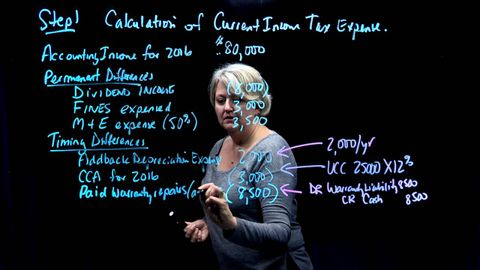
Subtitles & vocabulary
Income Tax Accounting (IFRS) | Calculating Current Income Tax Expense - Part 2 of 4
00
陳虹如 posted on 2017/06/23Save
Video vocabulary
essentially
US /ɪˈsenʃəli/
・
UK /ɪˈsenʃəli/
- Adverb
- Basically; (said when stating the basic facts)
- Used to emphasize the basic truth or fact of a situation.
A2
More eventually
US /ɪˈvɛntʃuəli/
・
UK /ɪˈventʃuəli/
- Adverb
- After a long time; after many attempts; in the end
- At some later time; in the future
A2
More figure
US /ˈfɪɡjɚ/
・
UK /ˈfiɡə/
- Verb (Transitive/Intransitive)
- To appear in a game, play or event
- To calculate how much something will cost
- Noun
- Your body shape
- Numbers in a calculation
A1TOEIC
More situation
US /ˌsɪtʃuˈeʃən/
・
UK /ˌsɪtʃuˈeɪʃn/
- Noun (Countable/Uncountable)
- Place, position or area that something is in
- An unexpected problem or difficulty
A1TOEIC
More Use Energy
Unlock All Vocabulary
Unlock pronunciation, explanations, and filters
